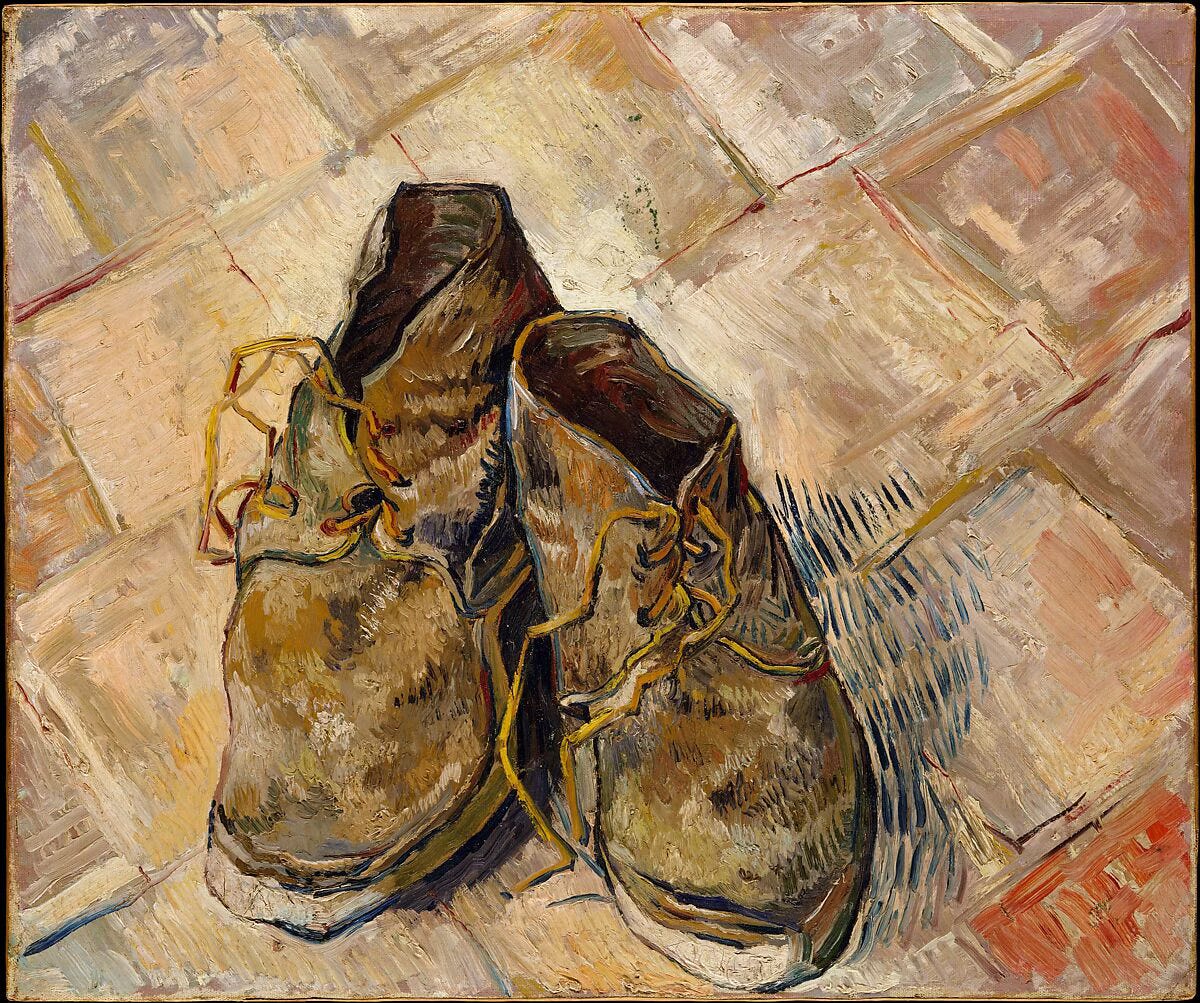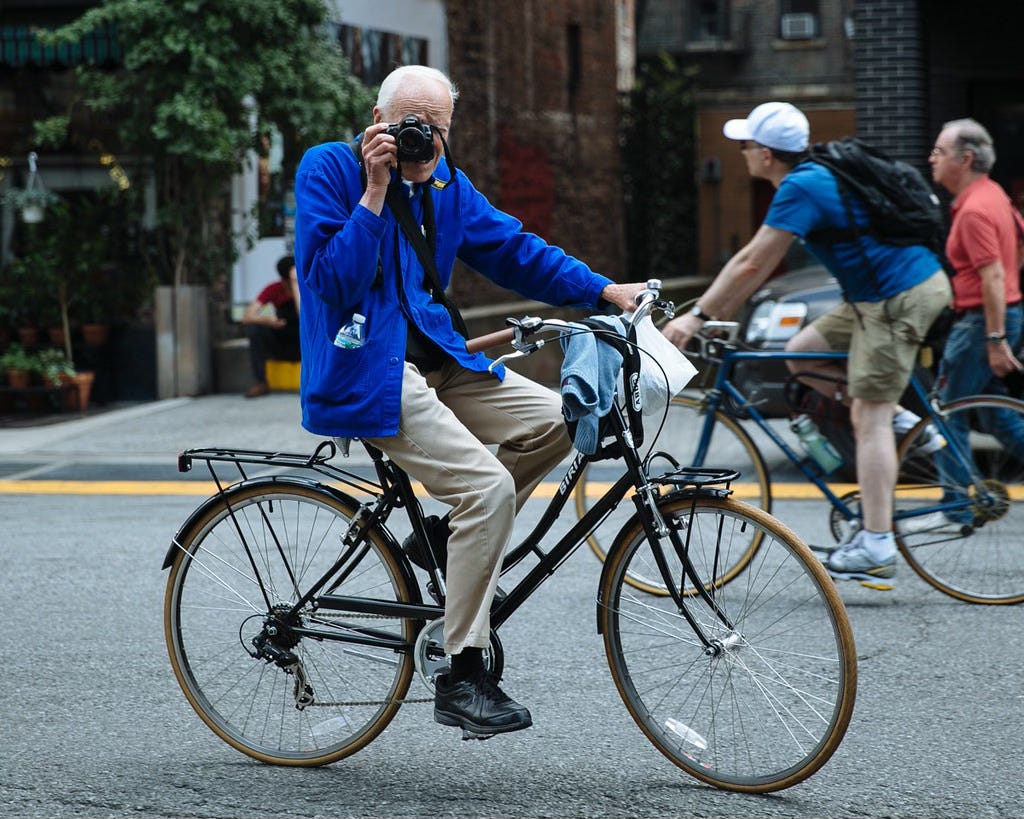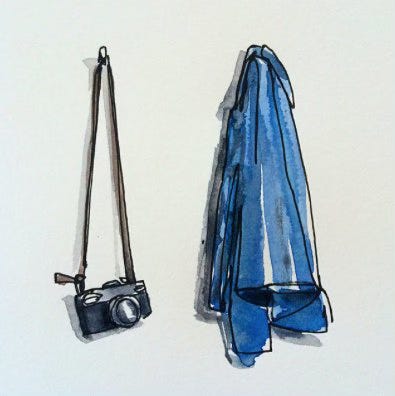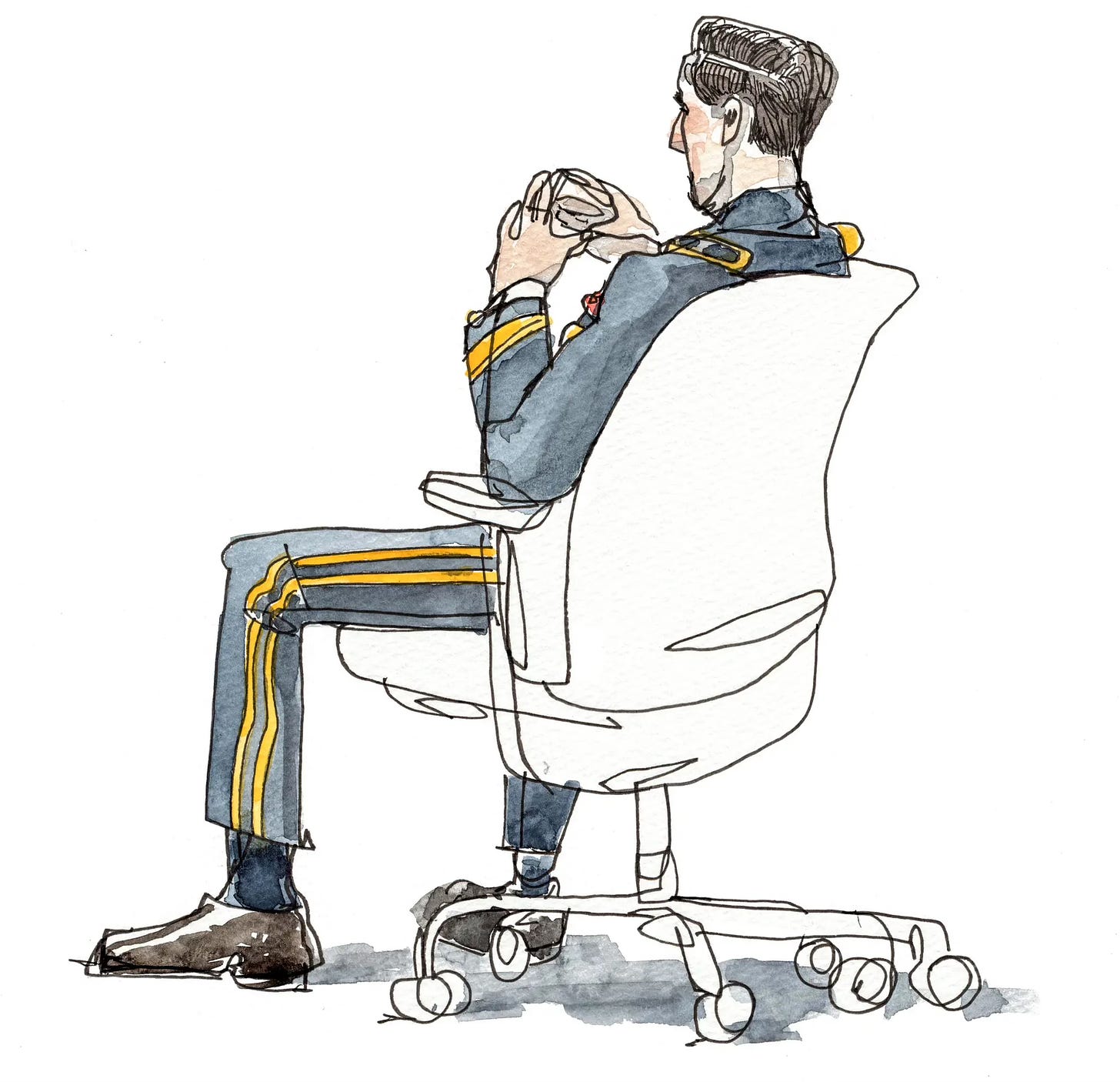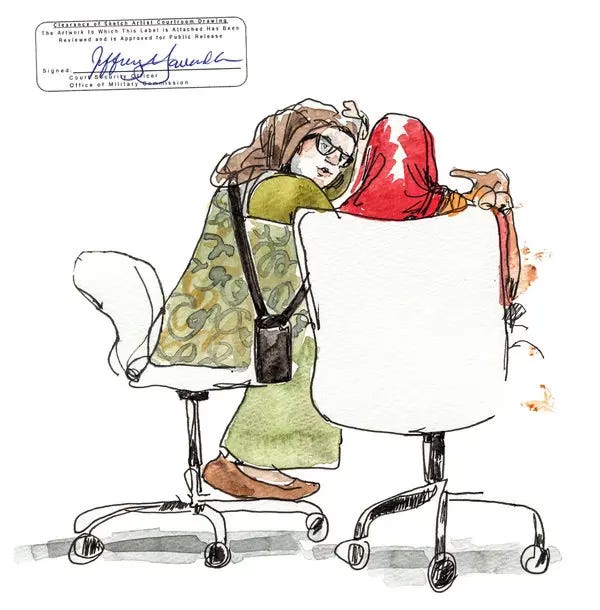Hellllooooo GUT peeps!
OMG, how fun were those blind contours!? I saw a few of you expressed feeling a little resistance, but even if it was a challenge, it ended up being fun, right?? Learning to let go and delight in the process is a lifetime endeavor, and I’m happy to be practicing with all of you through drawing.
Now, let’s get back to drawing some delights around us.
Today, we’re turning our attention to something that, like food, we engage with every day but often overlook: our clothes.
Clothing
“Artists and writers are particularly attuned to the stories embedded in objects. Drawing an object is a way to experience the object in a new way, and reexamine the memory associated with that object…” - Emily Spivack
Emily Spivack is the author, journalist and artist behind the phenomenal project Worn Stories. Emily spent years interviewing people about articles of clothing that was meaningful to them. That turned into a book, which then became a show on Netflix. Here’s the trailer for the show:
And here’s the description of the Worn Stories book (it’s so good.)
Everyone has a memoir in miniature in at least one piece of clothing. In Worn Stories, Emily Spivack has collected over sixty clothing-inspired narratives from cultural figures and talented storytellers. First-person accounts range from the everyday to the extraordinary, such as artist Marina Abramovic on the boots she wore to walk the Great Wall of China; musician Rosanne Cash on the purple shirt that belonged to her father; and fashion designer Cynthia Rowley on the Girl Scout sash that informed her business acumen.
I asked Emily if she thought drawing a meaningful (delightful!) article of clothing was a useful practice and what GUT members would get out of it. Here’s what she said:
“Artists and writers are particularly attuned to the stories embedded in objects. And drawing an object is a way to experience the object in a new way - and to reexamine the memory associated with that object. And sometimes even allow yourself to let go of the object.”
(I have a hard time letting go of object and clothes. Maybe you do, too. I sometimes wonder if drawing objects would help the more sentimental of us cull our collections…)
Today, we are taking Emily’s approach to our OWN wardrobe. But first, let’s look at other artists who celebrate clothing- theirs and other people’s. I’ll share some of mine, too. :)
Some Sartorial Inspo: Van Gogh To Gitmo
Van Gogh! (Shoes and hands really tell a person’s story.)
Artist, Illustrator and educator Kate Bingaman-Burt (read her captions!) (Maybe there is an article of clothing you have and/or wear that was inspired by someone you admire?)
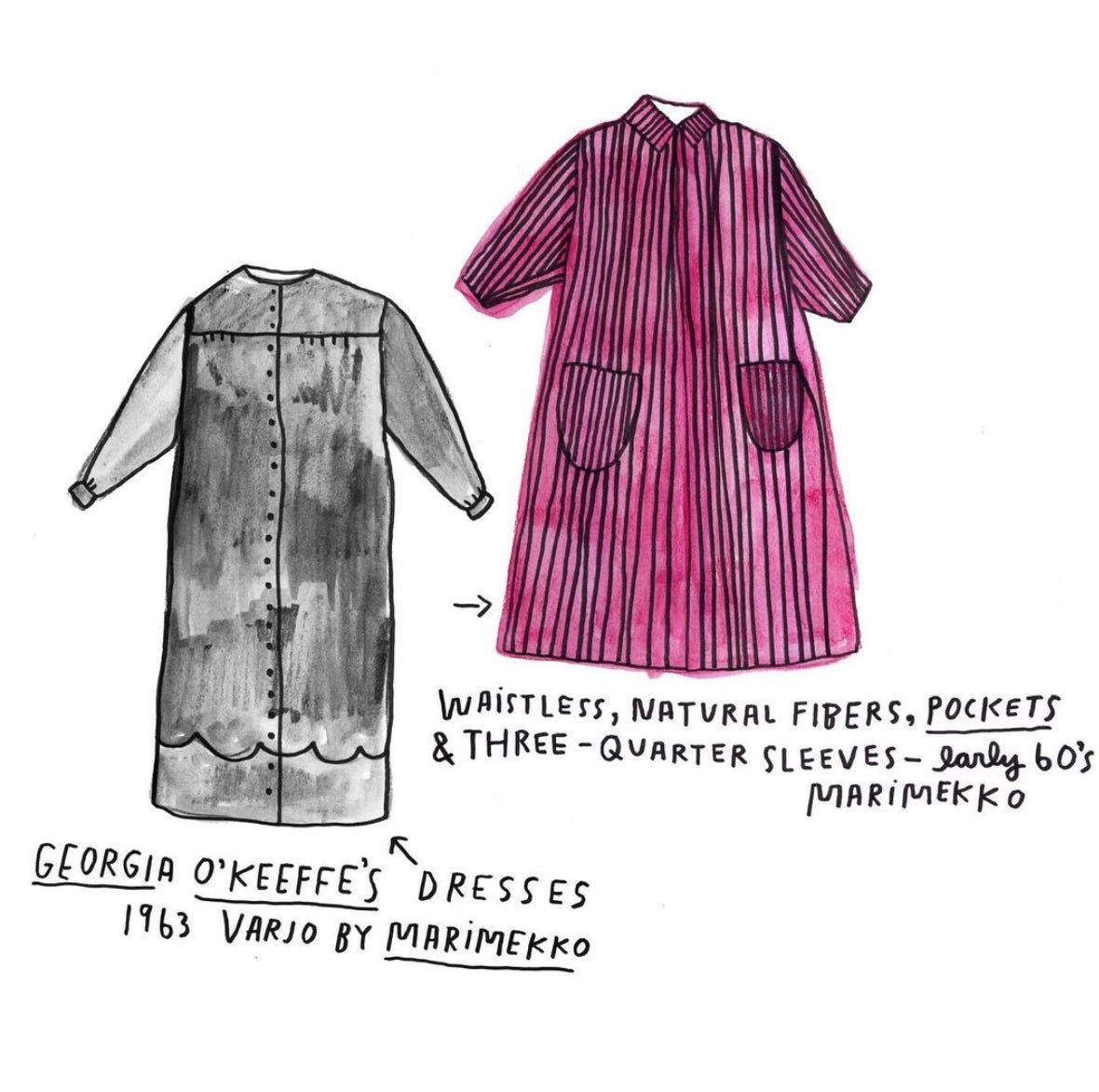
Andy Warhol is famous for his pop art, but IMHO his best art is his illustrations, especially HIS SHOES! Before Warhol took over the art world in the 80s, he illustrated for magazines. (Warhol was known as the “less political Ben Shahn.”) Here is a smattering of his shoe drawings he created that I find ridiculously fun and inspiring. (Is there an article of clothing you have that is fantastical that would be fun to elaborate on like this?)
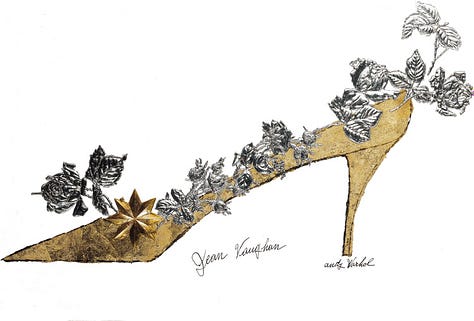





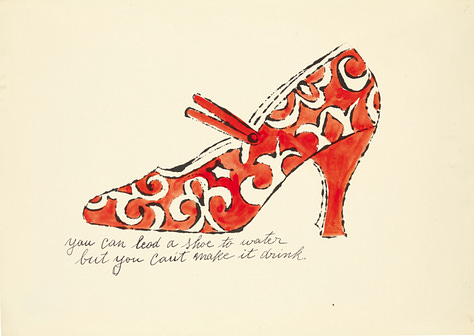
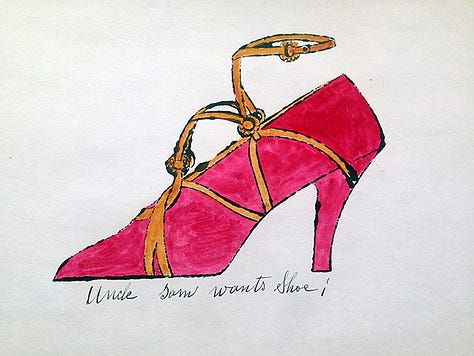

Speaking of fashion, remember the New York Times street-style photographer Bill Cunningham? As documented in the excellent documentary about his life and career, he was always recognizable in his blue chore coat with a camera around his neck.
When Bill Cunningham died, I drew a little memorial to him featuring his uniform. (Is there something you wear so often people associate it with you?)
Clothing can be light or heavy—and I don’t mean just the materials. Several years ago I had the unique opportunity to travel to Guantanamo Bay for the New York Times. I was only the 5th artist allowed on the base (no photographers allowed, only drawers!) and the NYT sent me to document the culture of the courtroom. Specifically, I was there to draw the clothing the detainees and lawyers wore and depict how they wore them - their postures, interactions, and general performance in the courtroom.
A lot of people regard fashion as theater. This took that notion to a new (very difficult to stomach) level. This was the opposite of delightful, but an important artistic experience none the less. Never before have I seen clothing carry such weighty stories.
And on that light note (heh) Let’s turn to our own wardrobe… and find a little DELIGHT in the stories woven into our clothing.





